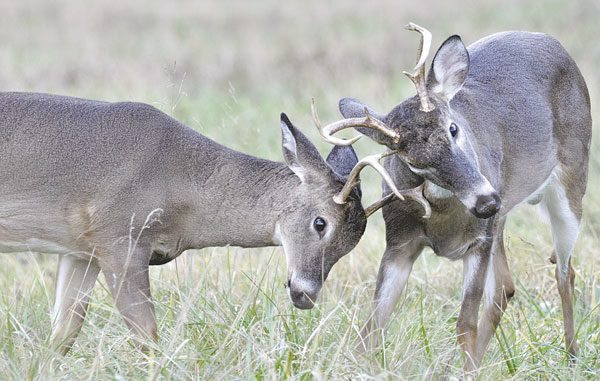
North Carolina’s 2011 Deer-Hunting Preview — Eastern counties are still best for numbers, and they’re catching up for quality bucks.
The northeastern corner of North Carolina, particularly Northampton County, is the place to find whitetail deer in big numbers and big sizes, according to last year’s harvest figures.
Results released by Evin Stanford, the N.C. Wildlife Resources Commission’s supervising big-game biologist, show that Northampton led the state in overall deer harvest and the harvest of bucks per square mile.
Northampton lies at the center of North Carolina’s “Peanut Belt” and annually ranks high in deer kills.
“Northampton has a high deer population, good habitat including a high amount of agricultural land and is a very popular hunting place,” Stanford said. “It also has part of the Roanoke River Game Lands and National Wildlife Refuge that are popular places to hunt deer.”
Most of the land is planted in peanuts, corn, soybeans and cotton — the first three being prime food sources for whitetails. Much of the best habitat also lies along the Roanoke River drainage, which features hardwood forests and swamps for cover and efficiently-managed hunting lodges that cater to deer hunters.
On much of the private land — especially the lodges — deer are managed using Quality Deer Management theories that emphasize balanced buck-and-doe numbers, high doe harvests and protecting smaller bucks.
In Northampton and neighboring Bertie and Halifax counties, bowhunters downed twice as many does as antlered bucks, while the overall harvest showed a near 50-50 split between the genders.
Hunters in Northampton tagged 6,063 deer in 2010, including an average of 5.16 bucks per square mile, top numbers in the state for both categories.
Despite high kill numbers, these counties also produced some whopping whitetail racks.
Tripp Todd, a 24-year-old senior at Shaw University, shot North Carolina’s No. 1 non-typical last Oct. 18, an 18-point brute with more than 182 inches of antlers, while hunting with his grandfather on private land in Northampton County. A month earlier, Conway’s John Kellett had arrowed a 20-point buck with almost 156 inches of antler that was the state’s biggest non-typical taken by a bowhunter.
Northampton wasn’t the only county in Northeast North Carolina to showcase high harvest numbers last season.
Halifax County, just across the Roanoke River and featuring almost identical habitat, was second in overall harvest numbers (5,841) and third in bucks killed per square mile (3.93).
Bertie County, which borders both Northampton and Halifax, was third in overall harvest (4,977) and 10th in bucks per square mile (3.15).
Lee Mizelle killed a huge buck out of a Bertie County beanfield on Nov. 9 with a basic 5×5 frame and two sticker points that scored 169 net inches. A week later, Steve Johnson returned from a beach trip to find two massive 10-pointers with antlers locked, dead in a Bertie County soybean field.
Hertford County, which shares a border with Northampton, also provided a massive buck, a 12-pointer arrowed Sept. 11, 2010, by Brad Stoops of Windsor.
Interestingly enough, Eastern North Carolina appears to be catching up to the Northern Piedmont as a producer of trophy whitetails. The 14 big-buck categories at the 2011 Dixie Deer Classic split 7-7 between eastern counties and counties from the piedmont and west.
The three major changes in Tarheel State deer hunting last season involved an extra week of muzzleloader season — and the corresponding loss of a week for archery-only season — the widespread use of crossbows and Sunday hunting by traditional bowhunters and hunters using crossbows. The extra week of muzzleloader season had the largest effect on the harvest.
Last season, blackpowder hunters killed almost 22,000 deer, an increase of 31 percent over 2009. That drove an overall increase of four percent in the statewide harvest, but the numerical difference between blackpowder season and the overall harvest was almost identical. Basically, the muzzleloader harvest jumped off the charts.
Hunters using traditional archery equipment and crossbows killed 13,646 deer, an increase of 1,354 deer over the 2009 season. Crossbows alone accounted for 2,959 deer.
The results of Sunday hunting were more difficult to quantify. Although Stanford’s charts track daily reported kills, he admitted they aren’t totally accurate because of the reporting system used in North Carolina.
“We allow hunters 24 hours to record their kills, either electronically or by the internet or at a cooperator agent,” Stanford said. “(The cooperator agent part) is a pretty archaic system, and it means that a lot of kills aren’t reported on the day they happen. In fact, a lot of people don’t report deer (kills) until days later, but we don’t penalize anyone for reporting a kill late.
“For example, somebody might kill a deer late Saturday, then not report it until Sunday, Monday, Tuesday or even later.
“I think a majority do report their kills accurately on the day they harvest a big-game animals, but not all do, so the reported figures aren’t exact. But, on the other hand, I think they’re pretty close.”
As far as deer taken on public lands, Wake County remained No. 1 with 392 deer taken on its three game lands: Butner-Falls of the Neuse, Jordan and Harris. All three have thousands of acres surrounding lakes, tracts filled with hardwood ridges, pine thickets for bedding areas and nearby agricultural croplands growing soybeans and corn.
That type of rolling, piedmont habitat also helped Wake County hunters lead the state in reported crossbow kills (118), even though the county includes the state’s fastest-growing, most-populated area, Raleigh.
Chatham County ranked second in public-lands kills with 389; the bulk of the Jordan Lake game lands lie within Chatham’s borders.
Montgomery County, containing the bulk of the 50,189 acres in Uwharrie National Forest, jumped from fourth to third place with 369 game-land deer kills in 2010.
Bladen County in the southeast, with its huge Bladen Lakes State Forest (32,363 acres) and Suggs Mill Pond (10,760 acres) games lands, tied Pender for third (218) in public-lands deer kills. Pender, an eastern coastal county, contains large Holly Shelter Game Land (64,743 acres) and Angola Bay (24,483 acres) game lands.
Chatham County, with 359 kills, led all counties in archery-tagged whitetails, followed by Wilkes (335), Stokes (311), Orange (299), Rockingham (292), Rowan (284), Anson (279), Iredell (276), Ashe (268) and Granville (265).
If there’s an interesting trend in the harvest, it’s that counties in the eastern half of North Carolina are supplanting Piedmont and Northwest North Carolina counties in terms of the number of bucks taken per unit area (square mile).
Northampton led at 5.16, followed by Vance with 4.06, Halifax with 3.93 and Alleghany with 3.89. Rounding out the top 10 counties were: Wake at 3.49, Hertford at 3.39, Edgecombe at 3.36, Franklin at 3.24, Chowan at 3.18 and Bertie at 3.15.
If harvest figures are any indication, hunters across North Carolina are allowing more small bucks to walk. The statewide average for bucks harvested per square mile is dropping statewide. For example, hunters in Alleghany County took 7.03 bucks per square mile in 2008, 6.82 in 2009 and 3.93 last season. Northampton hunters took 5.82 in 2008, 5.17 in 2009 and 5.16 last season. The harvest in Halifax dropped in a similar fashion: 4.91 in 2008, 4.39 in 2009 and 3.93 in 2010.

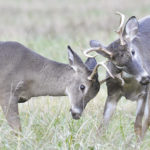
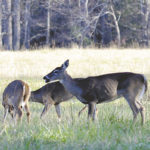
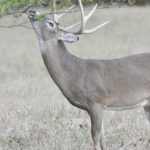
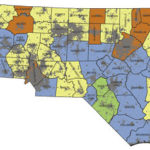
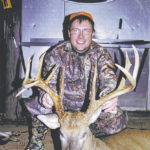



Be the first to comment